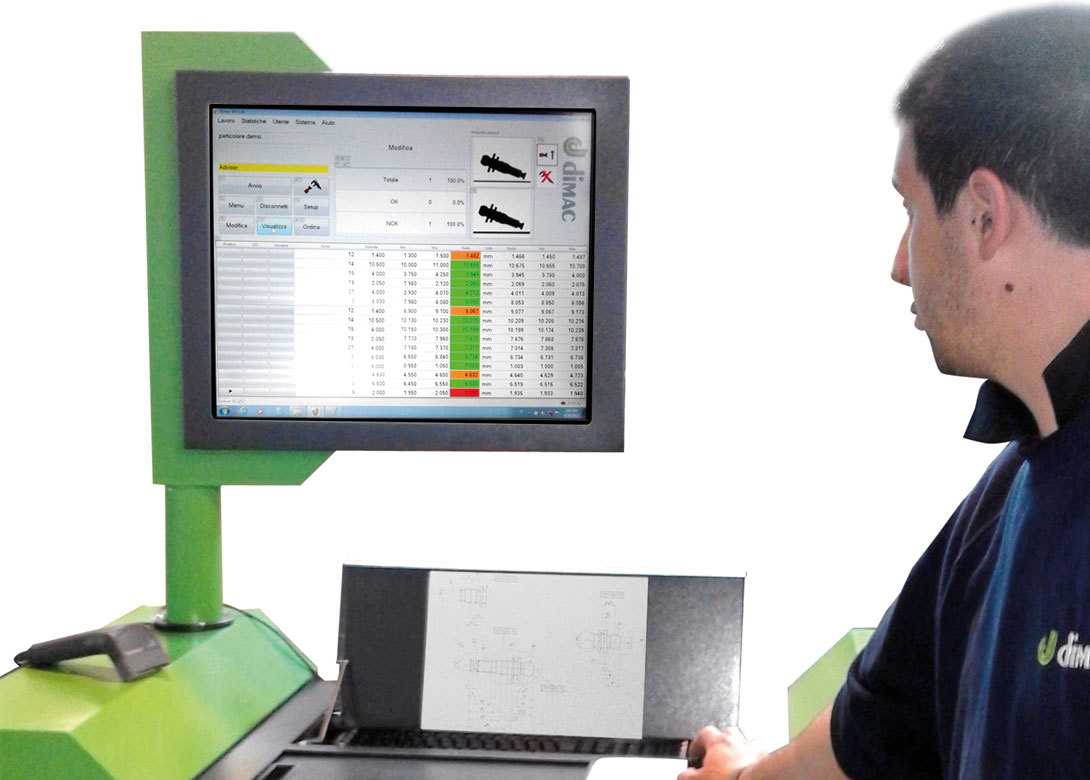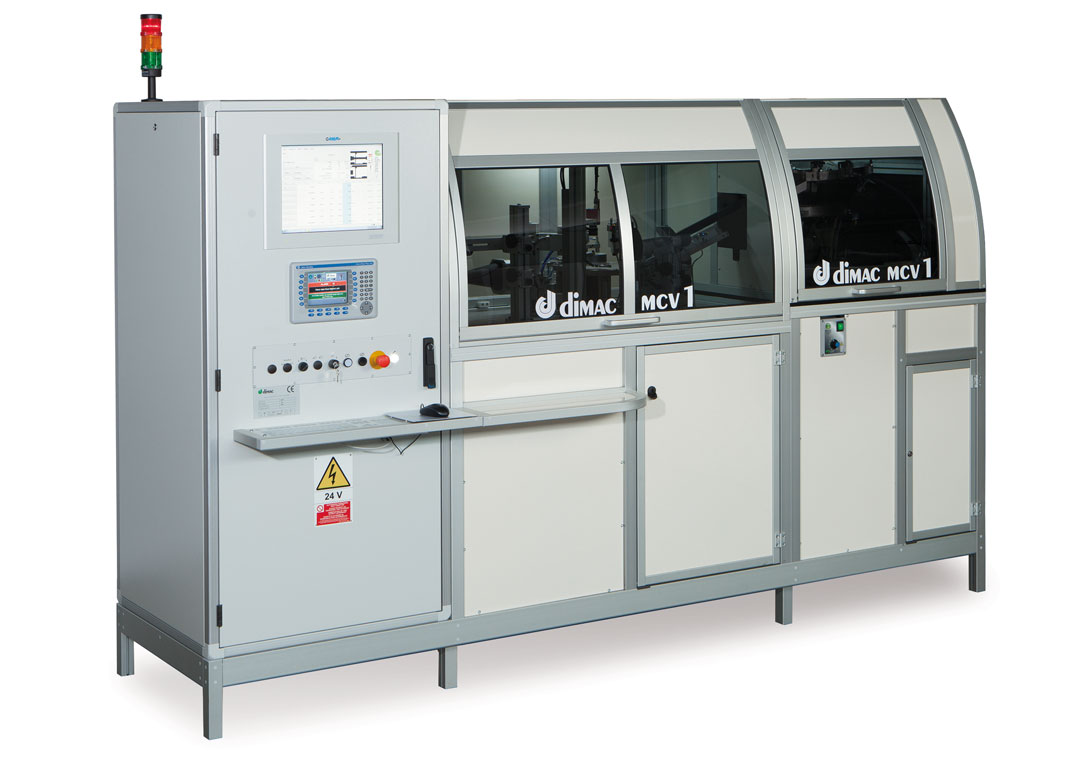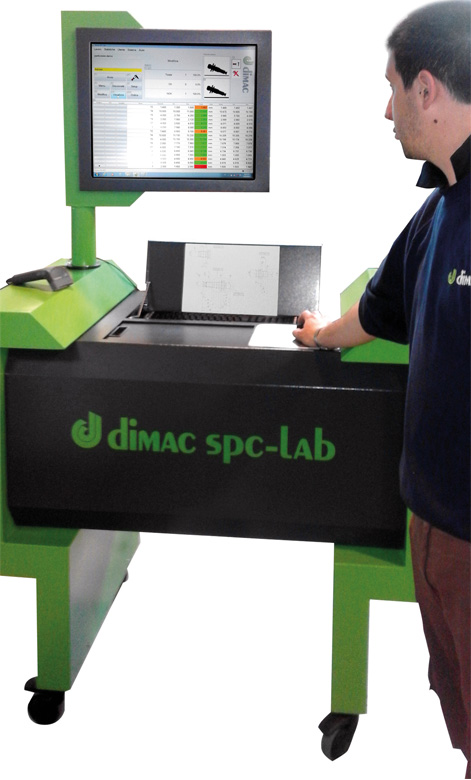
Celebrating its 30th anniversary, Dimac Srl has experienced a meteoric rise from a supplier of mechanical assemblies to a major player within the inspecting and sorting market. Here Massimo Agrati, general manager at Dimac, talks about how the company developed to become an innovation leader.
My father acquired Dimac when it was a supplier of mechanical assemblies for CNC machine tool manufacturers. Thanks to his previous experience within the industry, as well as his knowledge about threading fasteners and high speed washer assembly, he was able to introduce new upgrades to keep cold forging and threading machines up to date and increase their production and efficiency. For instance, applying new sensors, linear motors, high speed air valves – used in aerospace applications, and programmable logic controllers, all of which enhanced the capacity of the existing machinery on the market.
In 1998 we were asked by a few Italian customers to study the feasibility of an inspection machine. Customers knew about the competence of my father in mechanics, and my knowledge about CNC controllers and sensors, they knew that we could develop a reliable solution. We took on the challenge and developed the first prototype, which we called MCV1.
MCV1 is born
The MCV1 was based on a multipurpose vision system as, at the time, we did not have the knowledge required for a vision system dedicated to fastener inspection. After a few machines we decided to start developing our own vision system – fastener inspection oriented and based on standard components and cameras. Our philosophy was to use standard components that are always available everywhere in the worldwide market – to make it easy for customers to find spare parts.
Investing in the vision system, and the software behind it, to create a user interface dedicated to fasteners has been a continuous process ever since. We are always looking for further improvements and new features that we can add to the benefit of the customers.
Now the MCV1 includes a high productivity index and a continuous rotary table, suitable for a wide range of parts. Dimensional control and inspection of attributes is achieved using high resolution cameras, mechanical gauging, with NDT controls for cracks and heat treatment available.
Recognising the wide range and types of fasteners in the market, we went on to introduce several other models through the years, so that customers could control and sort the majority of fastener types. We now have nine different machine models. However, the same software is used across every machine – helping us to optimise the system, eliminate bugs and ensure prompt and effective troubleshooting. We are able to use the same software for every model as we have an internal configurator, on which we define the model type we are installing, adapting the system to meet the needs of each particular machine.
In parallel with the software, we also develop the mechanics of the machine. One of the most important aspects of inspecting and sorting parts is the feeding of the parts. You can have the best vision system, you can have the best sensor, the best lasers, whatever you want, but if the mechanics of the machine don’t fit the parts – constantly and with a good output rate to the inspection station – you cannot check the parts.
An inspection and sorting machine needs to work seven days a week, 24 hours a day, so the reliability and quality of the machines is paramount. In collaboration with this we also need to support the machine with the best possible service.
That is why all of our machines are connected, so we can troubleshoot remotely from our headquarters. We believe it is crucial to offer a prompt service when the customer needs you. To further improve this support, we have recently launched a new App, ACTY, with augmented reality tools for Android and iOS smartphones and tablet. Any operator in the world can use their smartphone or tablet to contact directly the Dimac Service and permit our staff to manage their mobile phone remotely. This allows our service to guide the operator through the machine step-by-step for any set-up or troubleshooting. We can also draw indications on the screen of their phone with augmented reality tools, as well as feed datasheets and user manual instructions. Our support service is one of our strongest points and our customers are very happy with what we can provide.

Innovating to customers’ needs
When it comes to innovating the machines, a key factor is working with fastener manufacturers and understanding what happens during the manufacturing process. They know better from where a failure during production can come. By having this close relationship with them we can understand their needs and provide the necessary solutions. I say to every customer: ‘At Dimac we provide machines as well as a cooperation and partnership.’ We want to learn from our customers and for our customers to learn from us. By doing this we both benefit from the relationship. By working closely, a customer can bring their knowledge of the process, and suggest modifications we can make on the machines to improve how it works, and how the operators work around it. If it is a dedicated modification for only that customer, that is fine, but where possible we will acknowledge the required modification and make it standard for all the machines we produce from that moment on. This means the machines are constantly evolving, and all of our customers are seeing the benefits.
A step forward in inspection
A new innovation from us, and a real step forward within the sector, is the SPC lab and the SPC robot, which we recently introduced to the market. SPC data collection is becoming a talking point within companies, due to the time needed for operators in key departments to measure the produced parts – using callipers, hand micrometres and a variety of other tools. In some companies, they have to measure five parts with different parameters each, every thirty minutes, which can be extremely time-consuming.
The introduction of the SPC lab and SPC robot enables companies to carry out automated statistical parts control in process, as well as the related data collection, on the production floor – achieving sustained quality by stable, predictable process results.
The introduction of the SPC robot was due to my experience in the machine tool manufacturing sector – where robots have been used for almost 30 years. In the fastener market this type of technology is still relatively new, but it offers a real opportunity for fastener manufacturers – especially using cobots (collaborative robots) which have the potential to provide significant time savings and production improvements.
The main benefit of the SPC lab and SPC robot is that it automates several inspection processes that are repeated and repeated. Getting operators to repeat the same operation eight hours a day seems very inefficient when you consider a robot can do the same job, in the same time interval. The SPC robot can be left to work on its own – you do not need somebody to monitor it. In addition, the use of cobots means the system is very user-friendly and does not require any technical knowledge. The cobot we have used is a very popular version, an open source system, which means there are a lot of different plug-and-play options for it, such as different gripping systems. This is very beneficial, as fasteners are very complex to handle and have different shapes and geometries.

Increasing requirements
With the ever increasing demands from end users for tighter and tighter tolerances, we have a lot of discussions with customers regarding the measuring capabilities of our inspection machines. Whilst our inspection machines do measure the parts, an inspection machine is a different thing than a measuring machine. An inspection machine works on a comparing principle, against a reference image stored in the system – which the user grabs to calibrate it. Measuring machines are not calibrated by the user, they have scales and encoders that are giving a fixed zero reference point, which is calibrated by the factory that produces the machine.
When you use an optical inspection machine to check products, the images of each part are always compared to the reference image stored in the system. If the user inputs that a certain number of pixels is 20mm on the master image, then the system will measure all the parts according to that number of pixels.
Customers need to understand that any optical inspection machine is comparing, not measuring. If the calibration process of the inspection machine done by the user is correct and it follows the recommendations by Dimac, the inspection machine returns reliable and accurate measurements as a measuring machine. In presence of the correct calibration the inspection machine could pass the same capability and repeatability tests like a measuring machine.
Opportunities for the future
The challenge for us in the future is to automate our machines as much as possible and make jobs simpler for the operator. The more we go into a world where operators have no skills or experience producing fasteners, the more requirements there will be for automation and connectivity within the production process.
Our reference market, of course, is the automotive sector. We want to have a strong identity as a company that supplies inspection and sorting systems for automotive parts. This is our goal, because automotive and e-mobility will be the future. It has always been the market for which the biggest volume of fasteners is produced and also where the most advanced technologies are applied.
Another important factor is that nowadays inspection and sorting has become a key part of the production process – helping to prevent the production of defective parts. Rather than being seen as just an extra cost, customers understand the benefits inspection and sorting can offer. These include guaranteeing a reliable supply of high-quality products to customers, with no defects, as well as additional feedback to improve the overall production process.
Companies are always looking to achieve zero defects, but the process of producing a fastener is very complex, with a lot of different steps, which means it is almost impossible to guarantee. However, as a flexible and reliable company we want to create a partnership with our customers so that we can both drive on the journey to zero defects together.
Find Dimac at Fastener Fair Italy on Stand 951.


Will joined Fastener + Fixing Magazine in 2007 and over the last 15 years has experienced every facet of the fastener sector - interviewing key figures within the industry and visiting leading companies and exhibitions around the globe.
Will manages the content strategy across all platforms and is the guardian for the high editorial standards that the Magazine is renowned.
Don't have an account? Sign Up
Signing up to Fastener + Fixing Magazine enables you to manage your account details.